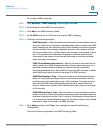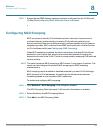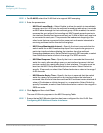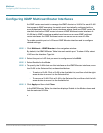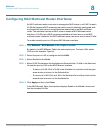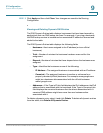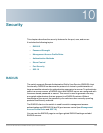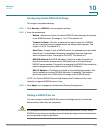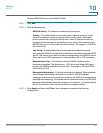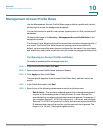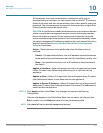
IP Configuration
Domain Name System
Cisco Small Business SG200 Series 8-port Smart Switch 145
9
STEP 5 Click Apply and then click Close. Your changes are saved to the Running
Configuration.
Viewing and Deleting Dynamic DNS Entries
The DNS Dynamic Entries table displays hostnames that have been learned by
applications that use DNS lookup services. For example, if you ping a hostname,
the DNS lookup service is invoked and an associated IP address is learned and
added to the table.
The DNS Dynamic Entries table displays the following fields:
• Hostname—Host name assigned to the IP address (or to an official
hostname).
• Total—Number of minutes the hostname has been reserved for this
assignment.
• Elapsed—Number of minutes that have elapsed since the hostname was
assigned.
• Type—Identifies the hostname as one of the following:
- IP Address—The assigned hostname is associated with an IP address.
- Canonical—The assigned hostname is an alias or nickname for a
properly denoted (official) hostname. For example, www.google.com
might be a hostname alias associated with the official hostname
www.l.google.com.
• Addresses—If the Type is IP, this field displays the IPv4 address or the IPv6
address that is associated with the hostname. If the Type is Canonical, this
field displays the canonical hostname that the alias is associated with. A
canonical DNS address might have more than one hostname alias
associated with it.
To delete a dynamic entry, select it and click Delete. To delete all dynamic entries
from the table, click Delete All Dynamic Entries.



